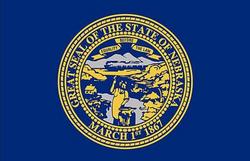Nebraska Medical License
Nebraska Department of Health and Human Services

Contact information
301 Centennial Mall South,
Lincoln, Nebraska 68509
(402) 471-3121
Things you need to know
- Application process: 8-12 weeks minimum
- Board Meetings: The Nebraska Medical Board meets every other month. Files must be presented at Board meetings if the applicant has any affirmative answers or took a state board exam
- Nebraska Medical License Application Fee: $300
- Background Check Fee: $38
- License Renewal: $121
- Expiration: Applications expire after 150 days from the date it is received by the Board
- FCVS: The Nebraska Board of Medicine does not accept FCVS profiles
- Interview: Not required
Nebraska medical license requirements
- SPEX/COMVEX Requirement: May be ordered by board to assess current competence
- USMLE Attempt Limit: Four attempts for Steps I – III
- USMLE Time Limit: Must complete all three steps within 10 years
- PGT (US/Canada Medical Graduate): 1 year
- PGT (International Medical Graduate): 3 years
Help applying to Nebraska medical licensure
Nebraska Licensee Assistance Program
lapne.org
(402) 354-8055
(800) 851-2336
LAPNE@BESTCAREEAP.ORG
MedLicense
medlicense.com
1639 Bradley Park Drive Suite 500, Box 357, Columbus, GA 31904
770-456-5932
770-217-9937
Medicallicencing
medicallicensing.com
2500 Hollywood Blvd., Suite 315, Hollywood, FL 33020
(800) 849-2168
info@medicallicensing.com
Nebraska Medical Association
nebmed.org
1045 Lincoln Mall, Suite 200, Lincoln, Nebraska
68508-2966
402.474.4472
800.684.9380
Healthcare Licensing Services, Inc.
healthcarelicensing.com
South Office: Healthcare Licensing Services, Inc, 1765 East Nine Mile Road, Suite 1 #358, Pensacola, FL 32514
North Office: Healthcare Licensing Services, Inc, 880 Munson Ave, Suite F, Traverse City, MI 49686
1-850-444-9814
1-904-339-9075
State description
Americans call Nebraska the corn state. Nebraska got its official name from the Sioux language. “No Brashe” means “smooth water”. This was the name given by the Indians to the Platte River, the largest river in the state, except for the Missouri.
Almost the entire territory of Nebraska is located in the steppe zone, conditionally divided into two regions – the eastern Dismembered Plain and the western Great Plain. In the extreme west of the state, there are spurs of the Front Range (Panorama Point Mountain, 1653 meters) and the Blue Mountain Ranges. The climate changes from east to west: from temperate continental humid to semi-arid. Seasonal temperature differences are significant. Nebraska is located in the Tornado Alley area, so tornadoes and hurricanes are common for the state.
Nebraska is an agricultural state. The leading place is occupied by the cultivation of cereals (especially corn), pigs and cattle.
Before the European development of America, Nebraska was home to the Sioux language group: Missouri, Omaha, Lakota, and others. Active research of the region took place at the turn of the 17-18 centuries. The surge in population growth occurred in the late 1840s during the gold rush years and after the 1860s when the Indians were evicted on the reservation. In 1867, Nebraska seceded from the territory of Kansas-Nebraska as the 37th state of the United States. In the year of the “cold war”, the center of the US Air Command was located here.
Major cities are of great tourist interest in Nebraska. Omaha boasts several theaters, an opera house, the famous Henry Dorley Zoo, several museums, and music festivals. Lincoln is also among the “cultural” cities of Nebraska. It is home to the US Independent Film Center, several museums, an art center, and a university.
